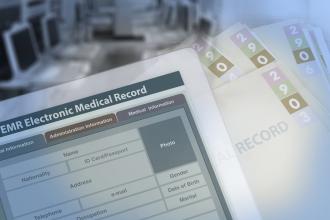Computerized offices: Yea
We echo the comments of Dr Lloyd Westby in the September 2005 BCMJ (47[7]:351-352)
recommending an electronic office system to any colleagues considering one and suggesting that if the government considers following Alberta’s lead in helping out financially, that they do not leave out those of us doing all of the pioneering at our own expense.
Our decision to computerize our office and move to an electronic medical record (EMR) came in anticipation of relocating our office in Coquitlam. We wanted to design a modern office that allowed for new technology and space efficiency. We felt that we could not wait for the BCMA or the government to reach consensus, guidelines, or funding for our computerization. None of the doctors in our group consider themselves to be computer techies. With the help of Wolf Medical Systems, Basic Business Solutions, and a loan from Scotia Bank, we converted to an EMR system in July 2004.
We now carry a tablet computer between examining rooms rather than a paper chart. We find retrieval of information, be it comparing lab results or reviewing a consultation or a previous chart entry, to be far more efficient than going on an extended fishing trip through a large paper chart. We are becoming faster at inputting data through our touch computer screen and keyboarding. One of the doctors who is a two-finger typist is having success with dictating via medical voice recognition software directly into a patient’s EMR. Our staff has shown not only willingness but also enthusiasm with our transition to EMR. They feel more efficient in their work and we are almost convinced that they like the system more than we do.
We moved to our new location in 2005. We had a reality check (and sore backs) when we realized the sheer volume of our paper charts. We sympathized with one of our associates who was retiring from practice and had to summarize her paper charts for records transfer and decide on a location for their storage. Finding the long-term cost of a chart storage company prohibitive, she now has a basement full of charts that will live with her for many years to come. We are hopeful that by the time we retire, we will have an efficient way to transfer records via our EMR system and have only some backup tapes and a small number of charts to store.
—Anne Brumwell, MD
Mandy Jawanda, MD
Kathleen Ross, MD
Jennifer Yun, MD
Coquitlam

